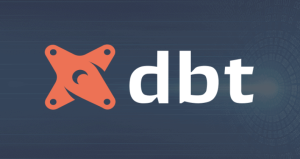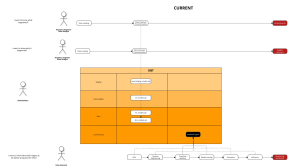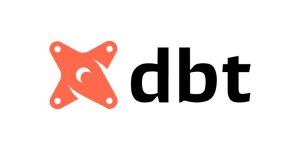Data transforms global processes, from disease research to revenue strategies, construction, and social media ads. Machine-readable data requires context; e.g., customer data needs to correspond to product purchases or price points. Data Modeling assigns relational rules, simplifying data for strategic decision-making.
What is Data Modeling?
Data modeling is a process of creating a visual representation of data and its relationships to help understand and manage data more effectively. It involves identifying the different types of data that an organization needs to store, how they are related to each other, and how they will be used in different contexts.
A data model typically includes entities (objects or concepts) and their attributes (properties or characteristics), as well as the relationships between them. Data models are used in many different industries, including software development, database management, and data analysis, to help ensure that data is organized in a logical and efficient way, making it easier to work with and analyze.
Importance of Data Modeling
Data modeling is an essential tool for managing data effectively. By creating a clear and concise representation of complex systems and processes, data modeling helps to reduce ambiguity, increase understanding, and drive better decision-making. Here’s how:
- Improve data quality: Data modeling helps to identify data inconsistencies and redundancies. It helps to eliminate data anomalies, which improves the overall data quality.
- Facilitate data integration: Data modeling enables different data sources to be integrated into a common data structure. This makes it easier to access and analyze data from different sources.
- Enhance communication: Data models provide a common language that can be understood by both technical and non-technical stakeholders. This facilitates communication between different teams and stakeholders, improving collaboration and decision-making.
- Increase efficiency: By creating a clear representation of the system or process, data modeling helps to identify areas for optimization and efficiency improvements.
- Facilitate system development: Data models are a key input for system development, providing a blueprint for how the system will be built.
- Support data governance: Data models provide a clear understanding of data structures and relationships, which is essential for data governance and compliance.
Joon’s take on data modeling tools
We have seen that data modeling is the process of converting data into a useful form using specific techniques and tools. Data modeling tools help to create a database structure from diagrammatic drawings.
dbt
One of the tools that our team has immense hand-ons experience and is at the top of our recommendation for data modeling is dbt.
dbt is an open-source tool used for transforming raw data into clean, structured data models using SQL queries
Here are several benefits that our team really loves:
- Modular approach: DBT allows users to create modular, reusable code that can be easily maintained and updated as data needs change. This helps to reduce development time and improve overall code quality.
- Automated testing: DBT includes built-in testing features that allow users to test their data models automatically, helping to ensure data accuracy and consistency.
- Version control: DBT integrates with version control systems like Git, allowing users to track changes to their data models and collaborate with other team members.
- Documentation: DBT automatically generates documentation for data models, making it easy to understand and maintain them over time.
- Scalability: DBT is designed to handle large datasets and complex data pipelines, making it a scalable solution for data modeling needs.
dbt use case
Let’s say we’re working with an e-commerce company that has a database with customer information, order information, and product information. We want to create a data model that combines this information and summarizes it for analysis.
Step 1
Create a “customer” table that includes the customer’s name, email, and address information.
| css{{ config( materialized=’table’ ) }} SELECT customer_id, first_name, last_name, email, address, city, state, postal_code FROM customers |
Step 2
Create an “order” table that includes information about each order, such as the order date, order number, customer ID, and total order amount.
| vbnet{{ config( materialized=’table’ ) }} SELECT order_id, order_date, order_number, customer_id, SUM(total_amount) AS total_order_amount FROM orders GROUP BY 1, 2, 3, 4 |
Step 3
Create a “product” table that includes information about each product, such as the product ID, name, category, and price.
| sql{{ config( materialized=’table’ ) }} SELECT product_id, product_name, product_category, product_price FROM products |
Result
With these three tables in place, we can create a “sales” table that combines the information from the “customer”, “order”, and “product” tables to create a summary of sales information. We can join the “customer” and “order” tables on the customer ID field, and then join the resulting table with the “product” table on the product ID field. The resulting table will include information such as the customer name, order date, product name, product category, and total order amount.
| sql {{ config( materialized=’table’ ) }} SELECT c.first_name || ‘ ‘ || c.last_name AS customer_name, o.order_date, p.product_name, p.product_category, o.total_order_amount FROM {{ ref(‘customer’) }} c JOIN {{ ref(‘order’) }} o ON c.customer_id = o.customer_id JOIN {{ ref(‘product’) }} p ON o.product_id = p.product_id |
This is just a simple example, but it illustrates how you can use dbt to create a data model that combines information from multiple tables and summarizes it for analysis.
Summary
Through this blog, we have thoroughly expounded on the various types, concepts, and benefits of data modeling.
Data modeling is an essential process in structuring data storage based on specific needs. Given the enormous volume of data that organizations handle, it becomes imperative to organize and decipher the data while facilitating effective communication to relevant stakeholders.
As for data modeling tools, dbt is a commendable offering that appears to be well-suited for most organizations or those seeking to furnish their analysts with workflow automation tools.
Thank you for your support and please drop a message in the comment section below if you need further clarification. We look forward to continuing to provide valuable content for the data community.
About us

Joon Solutions is a full-service data consultancy based in North America and Southeast Asia, recognized as a dbt Preferred Consulting Partner, Gold dbt Certification Award recipient, and verified by Google Cloud Platform as a Data Specialized and Premier Partner. We are also one of ten Looker Delivery Verified consultants worldwide. We assist organizations of all sizes with everything related to their data, from planning and advice to practical development and support.
Whether you’re looking to deploy new data platforms, manage complex migrations, or improve existing data models, our team is experienced in building scalable solutions. If you’re interested in learning more about how we empower clients to take control of their data, contact us today and check out our 2023 Case Study.
- Data Modeling and Why It’s Important - February 24, 2023
- SQL do’s and don’ts - November 3, 2022
- Data modeling pitfalls and where to find them - September 23, 2022



